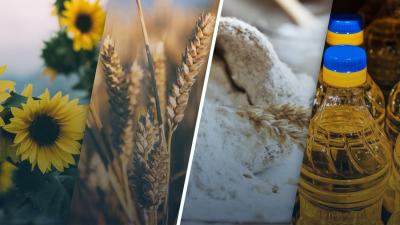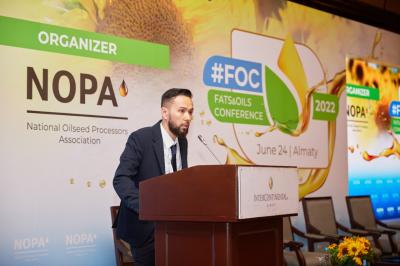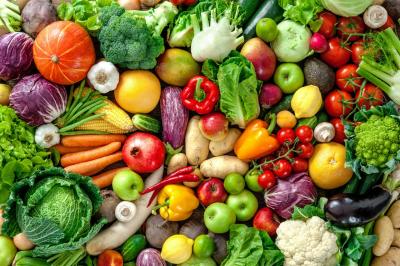
The harvesting campaign in Kazakhstan is coming to an end, the work on harvesting wheat has already been completed, and the rest of the crops are at the finish line.
We decided to find out what is the quality of the new harvest grain, whether Kazakhstan has problems with sales, whether our country needs new markets, and what should be done to consistently get a high-quality crop.
These and other questions were answered in an interview with the World of NAN portal by the official representative of the Grain Union of Kazakhstan, founder of the Severnoye Zerno group of companies Yevgeny Karabanov.
How do you assess the quality of grain this year?
– This year, the quality of grain is high, primarily due to weather conditions. There were nice and widespread growth, then came a hot summer. All this had a beneficial effect on the quality of grain. Usually in Kazakhstan, on average 10-15% of the total harvest is occupied by hi-pro wheat, that is, high-protein wheat, which is in high demand in world markets, in particular, in our traditional markets. This includes China, Turkey, and European countries. And this year, the share of hi-pro wheat in the total crop is more than 40%, that is, this has not happened for a long time. This is certainly a positive moment, but on the other hand, due to the fact that there are quite a lot of grain, it is very difficult to sell such large quantities in our traditional markets. Accordingly, producers will certainly not be able to receive any significant bonus for this wheat.
And what are the options in terms of solving problems with the sales?
-There are no problems with sales as such. If we look at the balance of our export potential for grains and flour and the balance of our potential importers-users, we see the same level of demand/supply. At the same time, we have a steady decrease in our carryover balances at the end of the marketing year (July-June). This year, the carryover of last year's food-grade wheat balance for the first time in 20 years was less than one million tons.
In different years, the carryover balance reached five million, four million, three and a half, but in recent years there has been a clear downward trend. On the one hand, a small carryover is a good thing, i.e. it does not put pressure on the market when prices for a new crop are formed, but on the other hand, in case of a crop failure or other force majeure, when demand from our traditional consumers increases sharply, it is now a disadvantage. Therefore, the carryover balance around one and a half million would be optimal for Kazakhstan.
What prospects does Kazakhstan have in terms of opening new markets? How much is it necessary at all?
- In the matter of opening new markets it is necessary to consider the geographical aspect. If we are talking about the main consumers on a global scale, which can include Indonesia, Egypt and Turkey, then there is "long" and expensive logistics. Since we have no access to the outer seas, we can't talk about any global moves to new markets. With expensive logistics, the competitiveness of our products is reduced.
At the same time, we have stable consumers in Central and Central Asian countries: Tajikistan, Uzbekistan, Kyrgyzstan, Turkmenistan and Afghanistan. Azerbaijan is a less stable importer, Georgia, too. In other words, Transcaucasia is already a volatile market for us.
In principle, we do not need new markets now, because today the consumption in the main countries-importers of our grain is developing dynamically. In Uzbekistan, Tajikistan, Afghanistan, the population is growing, accordingly, the needs in grain are increasing. For them, we are the closest and cheapest option in terms of logistics. Of course, theoretically grain can be imported from anywhere; the challenge is cost. Therefore, it is necessary to develop exports to these countries.
At the same time, we have a promising Chinese direction next to us, there are still niche supplies to Europe, which can also be maintained and expanded.
What do you need to do in order to consistently receive high quality grain?
- If we consider all aspects, the first will be genetic potential. The quality of grain is at the level of genes, that is, here we are talking about good seeds.
The second aspect is agricultural techniques. This is what depends on a person: the application of fertilizers, optimal terms of sowing and harvesting, the use of plant protection products, post-harvest processing of grain.
The third aspect is weather conditions. But, the first two points can significantly adjust the weather conditions, because if there is enough food, the plant needs less moisture to consume it. In this way, even years that are not optimal from the weather point of view, can be balanced in terms of yield.
What are the main problems in grain production today?
- We have two pressing problems. The first is the weakness of our transport infrastructure. Endless jams at the border points, especially at Saryagash station, in the directions of Uzbekistan, Tajikistan, Afghanistan and in the Chinese direction. This is a limiting factor for further development and ensuring stable supplies.
The second point is a large volume of the shadow market. We have repeatedly raised this issue. Taking into account the signed intergovernmental documents in the EAEC countries, as well as introduction of new interstate standards and technical regulations on safety of grain and products of its processing, a new law "On grain" is required. The Ministry of Agriculture created a working group, which included representatives of specialized associations, NCE Atameken and state structures. To date, participants and specialists of the Grain Union have developed a concept of accounting and traceability of grain at all stages of its life cycle - from producer to consumer. A draft of a new law has already been presented, which would allow to ensure full accounting and traceability of grain and its products. Now this document has been sent to all market participants and government agencies for discussion. We are waiting for suggestions and comments from all interested parties.
Thank you for the interview!












































Обсуждение